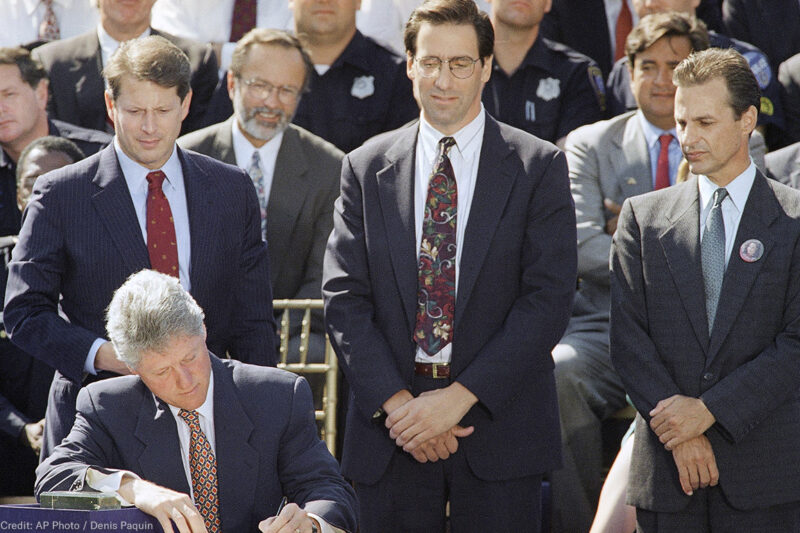
The 1994 federal crime bill that created tough new criminal sentences and incentivized states to build more prisons and pass truth-in-sentencing laws is getting new scrutiny during this 2020 election cycle.
Defenders of the law deny that it created the problem of mass incarceration, a term used to describe the fact that the United States incarcerates more of its people — disproportionately Black — than any other nation in the world. They argue that mass incarceration was a problem before the law passed. And regardless, they argue, the federal government has limited jurisdiction over the problem, as 90 percent of people in prison and jail are under state jurisdiction.
So who’s right?
It’s true that the federal government has limited jurisdiction over mass incarceration and that incarceration rates were already high by 1994. But it’s also true that following passage of the federal crime bill, incarceration rates continued to climb for an additional 14 years.
The federal crime bill did not trigger mass incarceration, but it certainly encouraged mass incarceration to grow even further. The 1994 law was the largest crime bill in the history of the United States. It was meant to make a statement, and it did — in at least two ways.
First, the 1994 crime bill gave the federal stamp of approval for states to pass even more tough-on-crime laws. By 1994, all states had passed at least one mandatory minimum law, but the 1994 crime bill encouraged even more punitive laws and harsher practices on the ground, including by prosecutors and police, to lock up more people and for longer periods of time.
Second, the 1994 law shaped Democratic Party politics for years to come. Under the leadership of Bill Clinton, Democrats wanted to wrest control of crime issues from Republicans, so the two parties began a bidding war to increase penalties for crime, trying to outdo one another. The 1994 crime bill was a key part of the Democratic strategy to show that it can be tougher-on-crime than Republicans.
While Republicans continued their Willie Horton-style fear-mongering that pushed for more punitive policies in the states, the official 1996 Democratic Party platform, which was meant to provide a vision for the Democratic Party nationwide, relied heavily on the 1994 law to display their tough on crime credentials. An entire section in the platform is dedicated to "tough punishment," taking pride in the fact that the Democratic Party passed tougher sentencing laws and provided more federal funding for prisons in the states.
The platform encouraged states to pass truth-in-sentencing laws, bragged about instituting the death penalty for nearly 60 more crimes, and even encouraged the prosecution of young people as adults. This platform remained largely in place until 12 years later, when in 2008, the tone and substance began to change under new leadership in the party. Coincidentally, incarceration rates peaked in 2008.
The right way to view the 1994 crime bill is as the moment when both parties, at a national level, fully embraced the policies and political posturing that exacerbated the mass incarceration crisis we are trying to fix today.
In 2019 and beyond, the best course of action for politicians who want to promote a smart justice-oriented vision for America is to disavow the 1994 crime bill and instead support a 50% cut in incarceration rates on the federal and state levels. Those running for federal office should pledge to use their power to close prisons once in office. That would be the best way to counteract the effects of the 1994 crime bill and prove that you don’t believe in the discredited tough-on-crime policies of the past.

